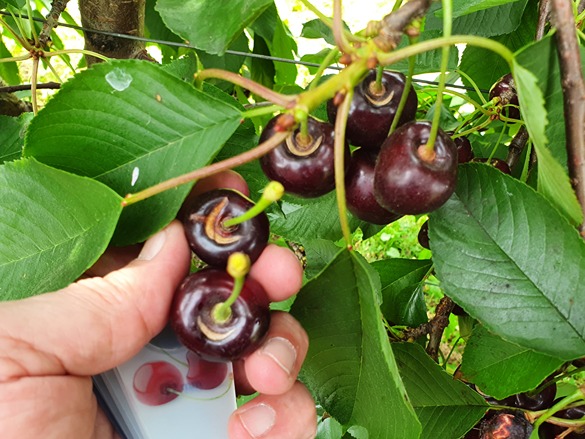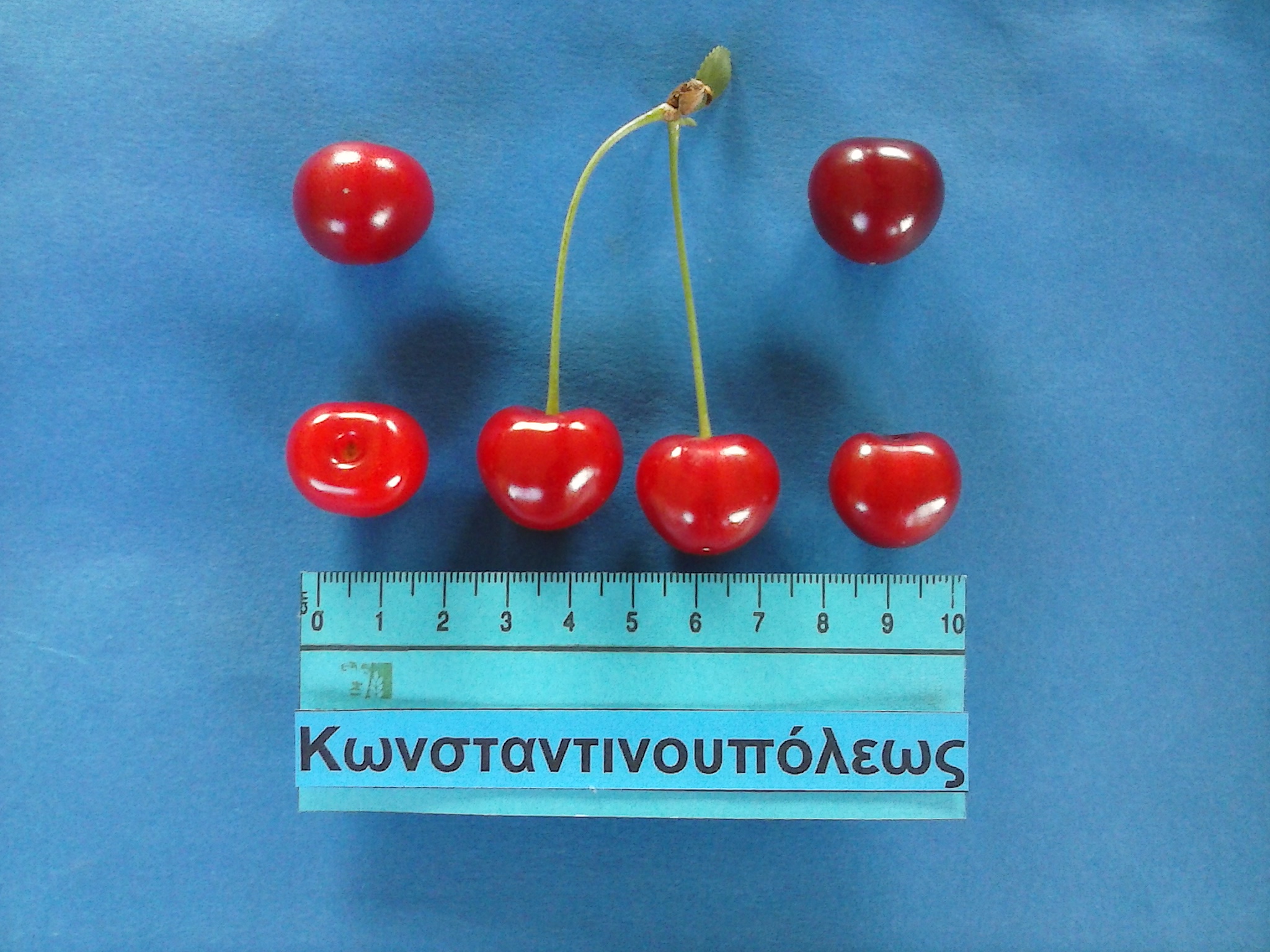The Okanagan, Similkameen and Creston Valleys are the main production areas in British Columbia, where 95% of Canada's sweet cherry production is concentrated. The Okanagan Valley is responsible for about 86% of the total production of cherries from British Columbia. The annual production of cherries in these regions is about 12,000-15,000 tonnes.
Currently, there are about 4800 acres (1942 hectares) of commercial sweet cherry plantations in British Columbia, but production is expected to increase. In 2018, cherries produced here were exported to 27 different markets, with an estimated revenue of $107.48 million. This makes cherries an economically important product for Canada.
In the Okanagan Valley, the main cultivars are 'Staccato', 'Lapins', 'Sweetheart' (also known as 'Sumtare'), 'Sentennial' and 'Skeena'. In terms of hectares covered, 'Sweetheart' is the third most cultivated cultivar in the Okanagan Valley, which makes this variety particularly important for local growers.
Furthermore, this variety was released by the Summerland Research and Development Centre of Agriculture and Agri-Food Canada, located right in the Okanagan Valley. 'Sweetheart' is a self-fertile tree that produces well and is a cross between the cultivars 'Van' and 'New Star' or 'Lapins'.
It is distinguished by its medium-large, red, elongated fruits with very firm flesh. Moreover, being a late cultivar has facilitated its expansion and diversification of market opportunities. Commercial production of sweet cherries in the Okanagan Valley is expanding northwards and to higher altitudes than in the past, partly due also to climate change.
This poses several concerns for growers, such as the availability of adequate irrigation water to maintain plant health and increased susceptibility to temperature damage in these more extreme growing locations.

According to the results of a study conducted at the University of British Columbia (Canada), the sweet cherry lethal temperature models devised for 'Sweetheart' and 'Lapins' showed potential when applied to other cultivars with comparable flowering duration, such as 'Sonata', 'Staccato' and 'Skeena'.
Model estimates were validated using data collected in the Summerland region at different altitudes. However, reliable lethal temperature data collected with greater latitudinal variability within and outside the Okanagan Valley could not be accessed. Lethal bud temperatures were higher when exposed to warmer and wetter conditions prior to differential thermal analysis.
Flower buds in ecodormancy were more susceptible to deacclimatisation when exposed to warmer conditions than those in endodormancy. Lethal temperature measurements were significantly lower when differential thermal analysis cooling rates were slower than when faster cooling rates were used.
The amount of material left at the base of the bud had no significant impact on the lethal temperature measurements when the region directly underlying the primordia was not disturbed. The results of the lethal temperature measurements obtained by differential thermal analysis and controlled freezing tests were comparable.
Source: Houghton, E. A. (2024). Aspects of low temperature survival in sweet cherry (Prunus avium) in the Okanagan Valley (T). University of British Columbia. Retrieved from https://open.library.ubc.ca/collections/ubctheses/24/items/1.0444117.
Image: SL Fruit Service
Melissa Venturi
University of Bologna (IT)
Cherry Times - All rights reserved











